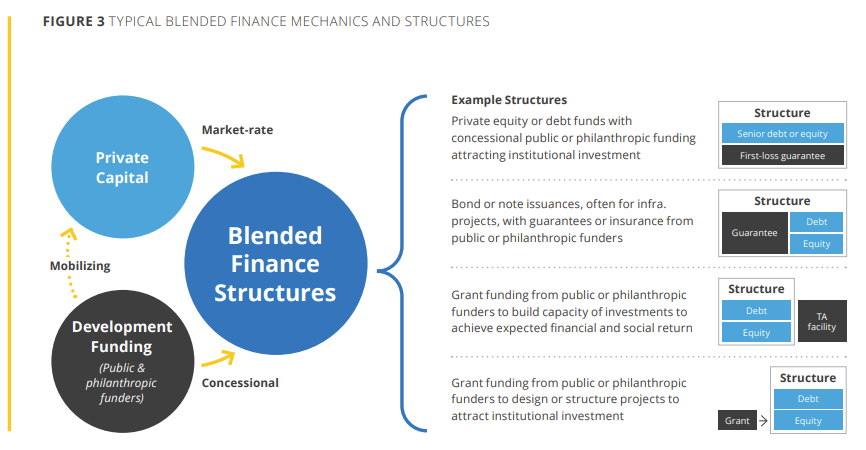image: crop of Figure 3 from the OECD’s 2018 “State of Blended Finance” report.
***
March 25, 2024
“Mobilizing private capital.” What’s up with those three words?
Over the past two months, I have been asking that question―and highlighting its relationship to global climate policymaking―to a few (very) different audiences. In early February, I presented an overview of my insights to climate and sustainability researchers at the Intercontinental Exchange, or ICE, the company that owns the New York Stock Exchange. Later that month, I reviewed (asynchronously) the financial designs of the Asian Development Bank’s IF-CAP guarantee facility and the Energy Transition Mechanism program for global development academics and civil society-based practitioners. In early March, I presented a deeper dive into the rhetoric around, theory of, and barriers to mobilizing private capital to David Wood’s graduate class at Columbia University’s SIPA.1 And in late March, I presented a similar take, but with an added focus on insurance and adaptation, to Madison Condon’s climate risk class at Boston University School of Law.
I’m enormously grateful for these opportunities. Preparing these presentations forced me to hone my own thinking around the relationship between politics and finance, and prompted me to better understand how my own personal work experiences play into my judgments about the state of global climate finance policymaking. It’s tougher than I thought to communicate complex financial concepts out loud; I can’t claim to have done them justice, but I hope what I did say made sense.
I’m most thankful for all the Columbia and BU students who asked me such great questions. Not only am I really thrilled that so many students are getting the chance to explore critical climate finance issues with two amazing professors, but I’m jealous that I can’t be there myself every week, exploring alongside them! I particularly appreciated the questions that forced me, and everyone else, to think deeply about what it takes to modify the relationships that connect the institutions that make up our financial system. There’s so much more that I need to learn―and learn to communicate!
Below, I have embedded a version of my presentation that aggregates my various individual presentations. Here’s what this means: at Columbia I talked about the Energy Transition Mechanism and not Global Shield, but at BU I talked about Global Shield and not the Energy Transition Mechanism, so, at risk of “crowding out” readers’ attention spans, I am going to include both interventions in this final slide deck!
And below my presentation, I am also embedding my presentation notes and sources. There are no public recordings of anything I said, unfortunately. But I kept my index cards, so I generally remember the beats I hit when I presented!2 My general recommendation for readers interested in knowing what I said about what’s on my slides is for you to try and read both documents at the same time. Best of luck with that.
Now, I don’t want to claim that my judgments here are authoritative. If you read the tea leaves differently, or know information I don’t, please make yourself heard! Send your thoughts my way―let’s learn together.
***
slideshow
***
slideshow notes



2 responses to “mobilizing private capital ― the slideshow!”
nice
LikeLike
[…] to “derisk” these investments such that they can be profitable at market interest rates, it’s still not clear that private sector creditors will respond with enthusiasm. Under these conditions, many […]
LikeLike